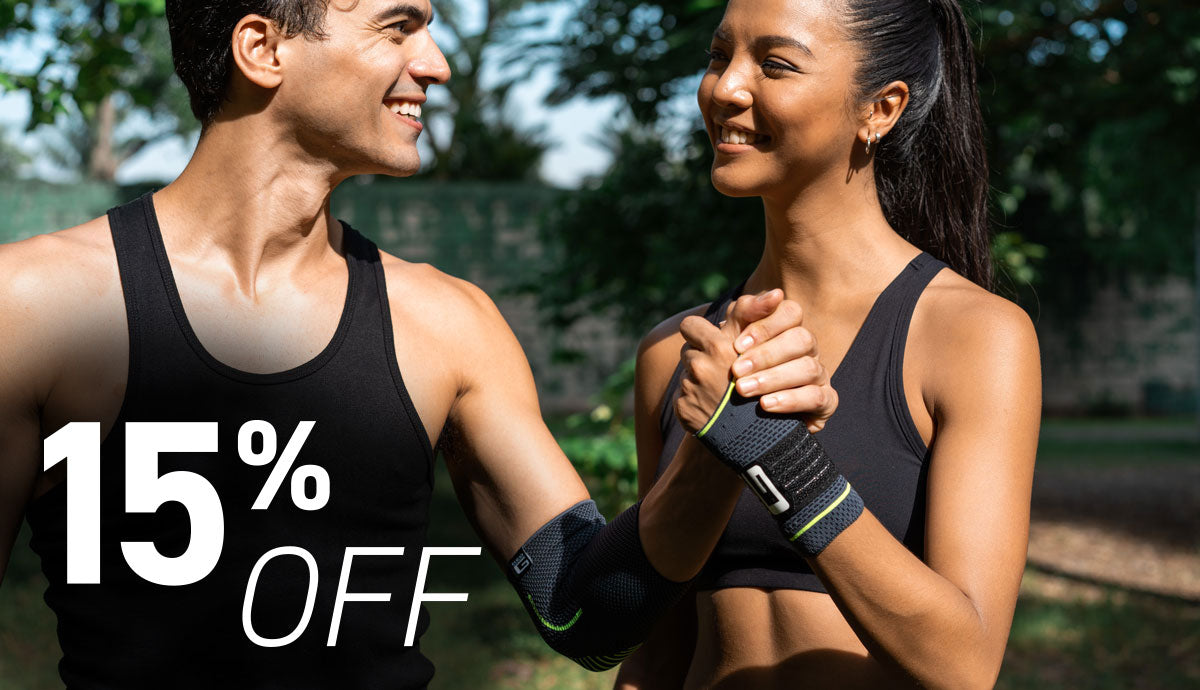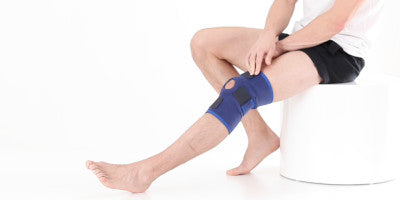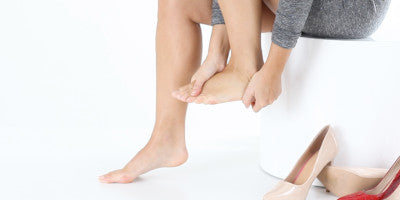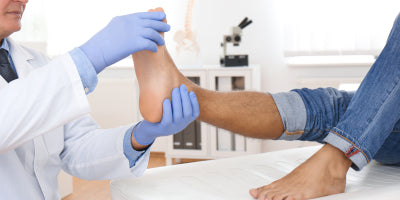Spring Into Activity With These Exercise Tips
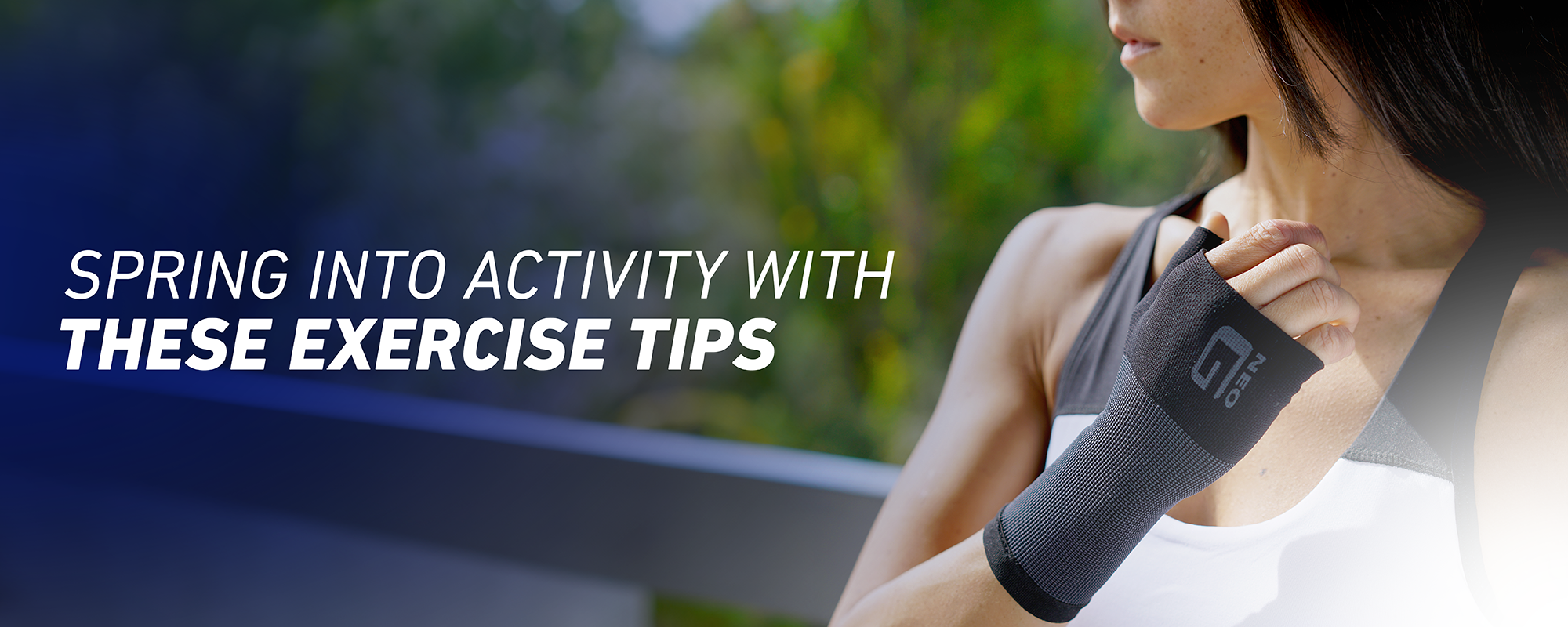
As longer days, daffodils and other signs of spring emerge, motivation for getting back into activity may also start to grow. After a potentially sedentary winter, resuming physical activity can pose challenges. Those with chronic conditions such as osteoarthritis may be feeling some apprehension or anxiety towards getting active again. However, it's crucial to approach this transition with a positive outlook and proactive mindset. Recognizing the potential physical and mental benefits of exercise is essential, especially for conditions like osteoarthritis, where movement is crucial for joint health. With even light exercise, we can mitigate the adverse effects of sedentary behaviour and foster a healthier lifestyle overall. Let's explore practical strategies for gradually reintroducing exercise into our daily routines, ensuring a smooth crossover from winter sedentary habits to a more active springtime lifestyle.
1. Find Enjoyable Activities
Finding enjoyable activities is a crucial aspect of maintaining a consistent exercise routine. When you engage in physical activities that bring you joy, you're more likely to stay motivated and committed to your fitness goals. Consider exploring a variety of options to discover what resonates with you the most. For some, the solitude and serenity of hiking through nature may be invigorating, while others may find satisfaction in the social aspects of team sports or group fitness classes. Swimming offers a low-impact option that can be both refreshing and therapeutic, while dancing provides a fun way to express yourself while getting a workout. Remember that exercise doesn't have to feel like a chore; it can be an opportunity to indulge in activities that bring you pleasure and fulfilment. By experimenting with different activities and discovering what truly resonates with you, you'll be more likely to stick to your exercise routine and enjoy the journey to better health and fitness.
2. Start Slowly and Set Realistic Goals
Starting slowly and setting realistic goals is essential for anyone looking to embark on a new exercise regimen. It's important to ease into physical activity, especially if you've been sedentary for a while, to avoid injury and burnout. Begin by incorporating low-impact exercises into your routine, such as walking, cycling, or swimming, which are gentle on the joints while still providing an effective workout. Start with manageable durations and intensities, listening to your body's cues and gradually increasing them as your fitness improves.
Setting achievable goals is key to staying motivated and tracking your progress. Consider your current fitness level, lifestyle, and schedule when setting goals to ensure they are realistic and attainable. For instance, if your goal is to improve cardiovascular health, you might start by aiming to walk for 30 minutes three times a week. As you become more comfortable with this routine, gradually increase the frequency, duration, or intensity of your walks to continue challenging yourself and progressing towards your fitness goals. By starting slowly and setting realistic goals, you'll lay a solid foundation for long-term success and sustainable lifestyle changes.
3. Buddy Up With An Exercise Partner
Buddy up! Exercising with a friend, family member, or group can significantly enhance your motivation and accountability. Sharing your fitness journey with someone else not only makes exercise more enjoyable but also provides the added support and encouragement you need to stay committed to your routine. Having a workout buddy creates a sense of camaraderie and friendly competition that can push you to work harder and achieve your goals. Whether you're hitting the gym, going for a run, or attending a fitness class together, having someone by your side can make the experience more fun and rewarding.
Moreover, exercising with a partner or group is an excellent way to socialize and strengthen your relationships. It allows you to bond over a shared interest in health and fitness while spending quality time together. You can motivate each other, share tips and advice, and celebrate each other's successes along the way. Additionally, scheduling regular workout sessions with a friend or group adds structure to your routine and helps ensure that you stick to your exercise plan. Even on days when you're feeling unmotivated, knowing that you have someone counting on you can be the extra push you need to get moving. So, grab a friend, lace up your trainers, and enjoy the benefits of exercising together!
4. Warm Up, Warm Down, and Listen to Your Body
Though the sun may be shining a bit more, spring can still be chilly. Therefore, before diving into your workout, it’s important to take the time to properly warm up your body to prepare your muscles and joints for the activity ahead. This is particularly applicable if you have a condition such as osteoarthritis. A thorough warm-up can include light cardio exercises, such as jogging, to increase your heart rate and circulation. Incorporating dynamic stretching or mobility exercises can also help loosen tight muscles and improve flexibility, reducing the risk of injury during your workout.
Equally important is the warm-down phase following your exercise session. warming down with stretches helps to gradually lower your heart rate and ease your body back into a resting state. Stretching can also aid in preventing stiffness and reducing muscle soreness post-workout, allowing for a faster recovery period.
Throughout your workout, it's crucial to listen to your body's signals and adjust your intensity or activities accordingly. Pay attention to how your body feels during and after exercise. If you experience any pain, discomfort, or unusual sensations, it's important to take a break and assess the situation. Pushing through pain can lead to further injury and setbacks in your fitness journey.
If you consistently experience pain or discomfort during exercise, it may be a sign of an underlying issue that requires attention. In such cases, it's wise to consult a healthcare professional or a qualified physiotherapist for guidance and support. Remember, your health and well-being should always be the top priority, so don't hesitate to seek help if needed. By incorporating these practices into your exercise routine, you can minimise the risk of injury and maximise the benefits of physical activity for your body and mind.
5. Know Your Current Limits
For anyone returning to activity following injury or with a chronic condition such as Osteoarthritis, it is key for you to know what your current limitations are before returning to activities. It is recommended that you receive a full assessment from a medical professional, such as a physiotherapist, to understand what your true limitations are.
For example, individuals who have Knee Osteoarthritis should be tested for their current range of motion in the knee joint in a variety of different scenarios to determine limiting factors. When fully relaxed, if there is a bony end point felt when the knee is flexed by the medical professional, then this is likely the maximum movement range that could be achieved.
However, if you move your own leg then you may stop at a different point due to a number of limiting factors such as pain, muscles weakness or muscle tightness. These are all things that can be worked on to improve that range of motion. If pain is limiting activity, then it may be prescribed to do activities in a specific movement range that is not painful, so you still get the benefits of strengthening weak muscles or stretching the tight muscles.
Some examples of exercises that may be prescribed for Knee Osteoarthritis are:
Straight Leg Raise
Start by lying down flat with the leg you will be working straight and the opposite leg bent at the knee. Bend the toes towards your head and raising the straight knee slightly off the floor. Hold this position for 5 seconds and then lower slowly. Repeating 5 times on each leg and complete in the morning and evening.
This exercise is ideal for helping to strengthen several muscles in the upper leg which can become weak if not used during prolonged periods. By working the muscles in this way there is less strain on the joints compared to other exercises. This can be ideal for significantly weak muscles as well as when pain is a limiting factor for movement.
Knee Squats
Place a chair or a stable object that is in line with your knee joint behind you. Sit down on the object. Try to stand up without using any support as long as this is safe to do. Once standing slowly lower down into the object. Repeat this as many times as possible in a minute. Progressions can include lowering the height you are aiming to sit on, adding additional weight or increasing the time.
Again this will work on various leg muscles as well as your balance but by doing these squats in a controlled everyday environment you will maintain the ability to get out of various seats which is crucial for a variety of scenarios that will be seen over a normal day.
6. Wear A Support If Needed
If you have an existing injury or condition that requires extra care, the use of a support could be right for you. It may be that all you need a support to do is to provide some confidence and protection from antagonizing an old injury. As mentioned above, spring can still be a bit chilly so the use of a support can have a beneficial warming effect that will compliment your warm up routine. Supports that offer compression can improve blood flow, reduce swelling, and enhance muscle recovery. Our Airflow range of supports are ideal for getting back into activity this spring as they offer mild support, great for easing back into exercise. Airflow supports all feature Multi Zone Compression which allows for targeted compression around joints. They’re constructed from a specialist lightweight breathable fabric which is ideal for exercise as the Multi Way Stretch of the material ensures flexibility during increased activity. Our Airflow range of supports are also our broadest range of knitted compression supports, offering products for the wrist & thumb, ankle, knee, elbow and calf & shin.
Transitioning from a sedentary winter to an active spring requires patience, commitment, and a positive mindset. By incorporating the tips outlined in this blog – from finding enjoyable activities to listening to your body and wearing appropriate supports – you can ease back into exercise safely and effectively. Remember that progress takes time, so be patient with yourself as you embark on this journey towards a healthier, more active lifestyle. With dedication and perseverance, you can embrace the rejuvenating spirit of spring and reap the countless benefits of regular physical activity. So, embrace the beauty of the season and spring into activity!
